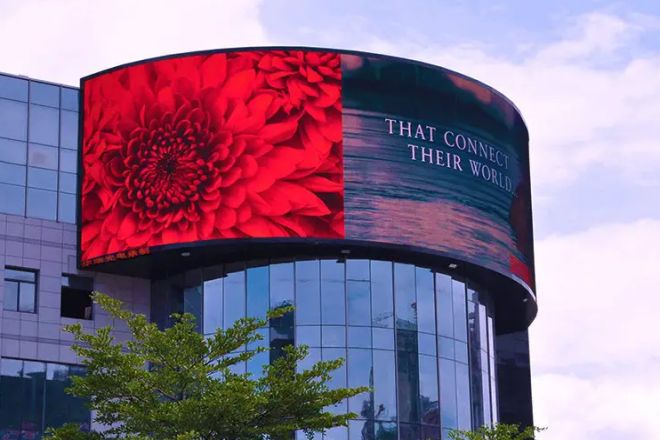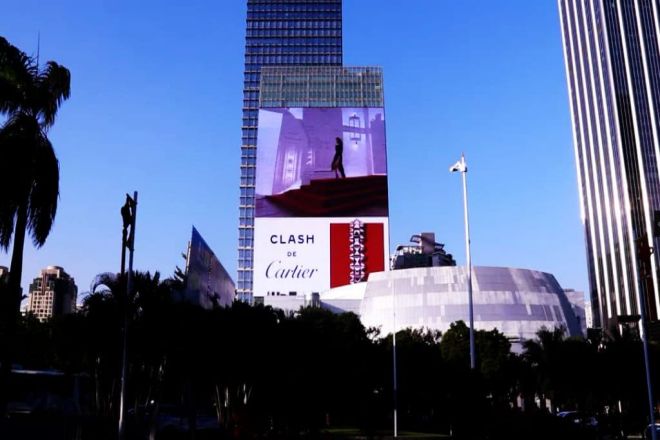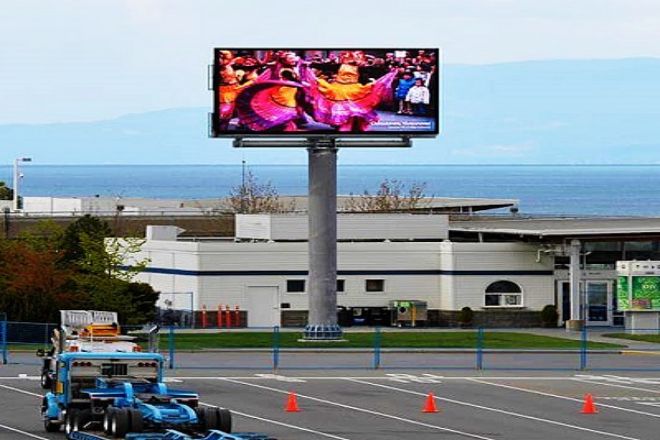介绍

As the seasons turn, many countries will be facing a sweltering summer. During this season, the sun is scorching the earth, the temperature is rising, and the humidity is also increasing, making the air full of dullness and depression.
Under such climate conditions, for all walks of life that rely on LED displays for information dissemination and display, how to ensure that LED displays operate stably in high temperature and high humidity environments and avoid performance degradation and malfunctions has become an urgent need solved problem.
1. What weather conditions are generally more harmful to LED displays in summer?

In summer, the weather conditions that cause greater damage to LED displays mainly include the following:
- 天气炎热:
Under the scorching sun in summer, the temperature continues to rise, which brings severe high temperature tests to LED displays. High temperature not only causes the temperature of the circuit board of the display to rise sharply, but may also cause the temperature of the LED chip to far exceed its normal operating range.
This not only affects the performance of the display but may also accelerate the aging of its internal components and shorten its service life. In high-temperature environments, the heat dissipation performance of the display becomes particularly important, and how to effectively dissipate heat has become an urgent problem to be solved.
- 倾盆大雨:
Heavy rains in summer often come violently and suddenly, which is undoubtedly a huge challenge for outdoor LED displays. A large amount of moisture in heavy rain may penetrate into the interior of the display through the gaps or interfaces, causing serious damage to the display’s circuit board and components.
Especially for those display screens with insufficient waterproofing measures or aging, heavy rain is like a “killer” and may cause damage or even scrapping of the display screen.
- 雷电天气:
Lightning is a common natural phenomenon in summer, and its destructive power cannot be underestimated. The high-voltage current and electromagnetic pulse generated by lightning may directly hit the LED display, causing short circuits and damage to its internal circuit.
At the same time, lightning may also cause safety accidents such as fires, posing serious threats to the display screen and the surrounding environment. Therefore, the safety of LED displays becomes particularly important during lightning weather.
- Typhoon weather:
The strong winds and heavy rain brought by typhoons pose a huge threat to outdoor LED displays. Under the influence of typhoons, the steel frame structure of the display screen may be severely damaged, causing the display screen to collapse or fall off.
This may not only cause damage to the display but may also cause serious injury and loss to surrounding people and property. Therefore, how to ensure the stability and safety of LED displays during typhoon weather has become an urgent problem to be solved.
2. LED display strategies to spend the summer safely

Facing weather conditions such as high temperatures, heavy rains, thunder and lightning, and typhoons in summer, the strategies for LED displays to safely spend the summer are as follows:
1). High-temperature weather response strategies
- Thermal optimization:
In the face of high temperatures in summer, the heat dissipation problem of LED displays is crucial.
By using advanced heat dissipation technologies, such as aluminum heat dissipation fins, integrated heat conduction and heat dissipation technology, heat pipe heat dissipation, etc., the heat dissipation efficiency of the display can be greatly improved.
These technologies can effectively reduce the temperature inside the display and prevent component damage caused by overheating.
At the same time, the principle of aerodynamics is used to optimize the design of cooling air ducts and fans to ensure that heat can be quickly dissipated to the surrounding environment, thereby maintaining the stable operation of the display.
- 智能温控:
With the help of temperature sensors and intelligent control systems, the operating temperature of the display can be monitored in real time. Once the temperature exceeds the preset threshold, the system will automatically adjust the working status of the display, such as reducing brightness, reducing working hours, etc., to reduce power consumption and heat generation.
This intelligent temperature control technology not only protects the display from high temperature damage but also extends its service life and improves overall performance.
2). Heavy rain weather response strategies
- 防水设计:
Heavy rain weather places strict requirements on the waterproof performance of outdoor LED displays. The use of high-grade waterproof materials and sealing design ensures that the display’s casing and internal components can withstand rainwater.
Carefully designed waterproof structures, such as waterproof rubber rings, waterproof interfaces, etc., can effectively prevent rainwater from penetrating into the interior of the display and ensure its normal operation.
- Drainage system:
Set up a complete drainage system around the display screen to ensure that rainwater can be drained quickly to avoid damage to the display screen caused by accumulated water.
Through properly designed drainage ditches, drainage holes, and other structures, accumulated water can be quickly guided to a safe area and a dry environment around the display screen can be maintained.
3). Thunder and lightning weather response strategies
- Lightning protection equipment:
Thunder and lightning weather pose a serious threat to the safety of LED displays. Installing lightning protection equipment such as lightning rods and lightning protection strips above or near the display screen can introduce lightning into the ground and effectively protect the display screen from lightning damage.
These lightning protection devices can quickly guide lightning current underground to prevent lightning from directly hitting the display screen and ensure its safe and stable operation.
- Power outage protection:
In thunder and lightning weather, timely cutting off the power supply of the display is an effective protection measure. By cutting off the power supply, you can prevent lightning from entering the display through the power cord and causing damage.
After the thunderstorm is over, reconnect the power supply to ensure that the display can work normally.
4). Typhoon weather response strategies
- Stable installation:
Typhoon weather places strict requirements on the load-bearing steel frame structure of outdoor LED displays. Ensure that the steel frame structure of the display screen is stable and reliable and can withstand the impact of severe weather such as typhoons.
During installation, the design and installation must be strictly in accordance with the requirements of wind resistance level to ensure that the display can stand firmly on the ground.
- 定期检查:
Regularly inspect and maintain the steel frame structure and fixings of the display screen to ensure that they are in good working condition.
Discover and deal with potential safety hazards in a timely manner to ensure that the display screen can operate safely and stably in severe weather such as typhoons.
5). Comprehensive response strategies
- 定期维护:
Perform regular maintenance and upkeep on the display, including cleaning surface dust, checking connecting wires, replacing aging components, etc.
Through regular maintenance, you can ensure that the display is in good working order and extend its service life.
- Make reasonable arrangements to use:
In hot weather, appropriately reduce the use time of the display to reduce power consumption and heat generation.
In severe weather, such as heavy rain, thunder and lightning, and typhoons, try to avoid using the display or take power-off measures to protect the display.
- Strengthen monitoring:
Monitor the working status of the display screen and changes in the surrounding environment in real-time through the remote monitoring system, and detect and handle abnormal situations in a timely manner.
This monitoring method ensures that the display can be protected and maintained in a timely manner regardless of weather conditions.
3. Prevention and emergency measures

1). Precaution
- Cooling solution planning:
Assess in advance the cooling needs of the display in high-temperature environments in summer, and plan and install appropriate cooling systems, such as fans, heat sinks, etc.
Make sure the display case has good ventilation so that heat can dissipate in a timely manner.
- 定期检查:
Regularly check key components such as the display’s cooling system, fan, and power supply to ensure that they are in good condition and working properly.
Check the waterproof and dustproof performance of the display to ensure it can operate normally under adverse weather conditions.
- 维护:
Clean the display screen regularly to remove dust and debris, and keep its surface clean and heat dissipated well.
Regularly check the display’s connecting cables, circuit boards, and other components to discover and deal with potential problems in a timely manner.
- 防雷措施:
Install lightning protection equipment such as lightning rods or arresters near the display to ensure that the display is protected from lightning damage.
Take lightning protection measures for the power lines and signal lines of the display screen, such as installing lightning arresters.
- Stable installation:
Ensure that the display bracket and installation structure are stable and reliable and can withstand the impact of severe weather.
Regularly check the display installation structure to ensure there are no loose or damaged parts.
2). Emergency measures
- Overheating response:
When the display overheats, you should immediately turn off the display and disconnect the power supply to reduce the temperature and prevent further damage.
Use cooling equipment (such as fans, air conditioners, etc.) to cool down the display, and then turn it back on after the temperature returns to normal.
- Back up plan:
Where possible, prepare a backup display or other alternative that can be quickly replaced or activated if a display fails.
Make sure backup displays or other alternatives will work properly and perform necessary testing and configuration ahead of time.
- Emergency repairs:
Establish an emergency maintenance mechanism to ensure that professional maintenance personnel can be contacted promptly when a display fails.
Maintenance personnel should be familiar with the structure and maintenance procedures of the display screen and be able to quickly locate and solve problems.
- Data backup:
Make regular backups of important data on the display to prevent data loss due to display failure.
Ensure backup data is secure and recoverable so it can be restored quickly when needed.
结论
In the sultry summer, LED displays face unprecedented challenges. However, as long as we adopt scientific management strategies, careful maintenance and reasonable use, we can ensure that the LED display screen operates stably in a high temperature and high humidity environment and continues to play its important role.
最后,如果您想了解更多关于LED显示屏的知识, 请联系我们。
